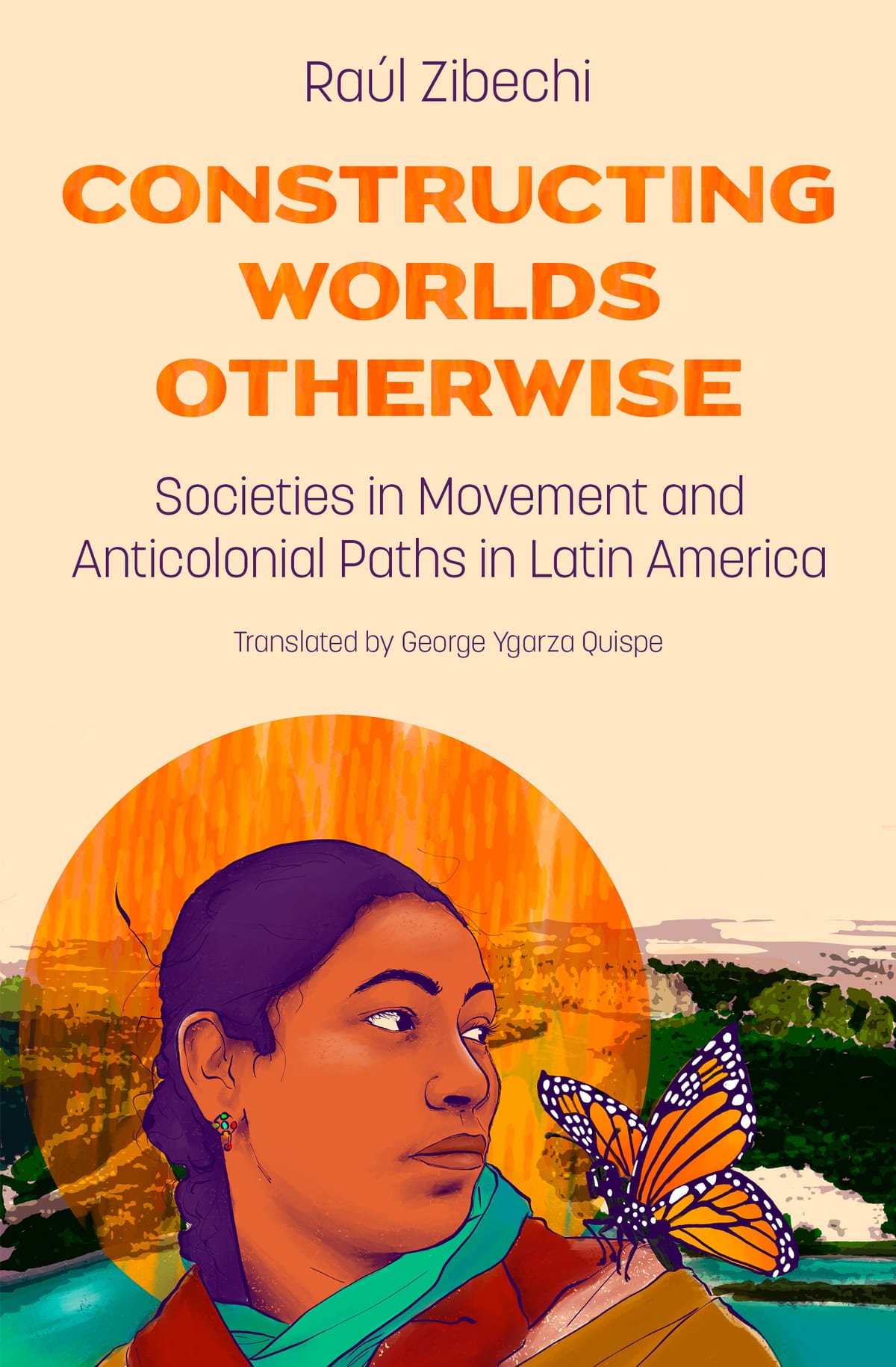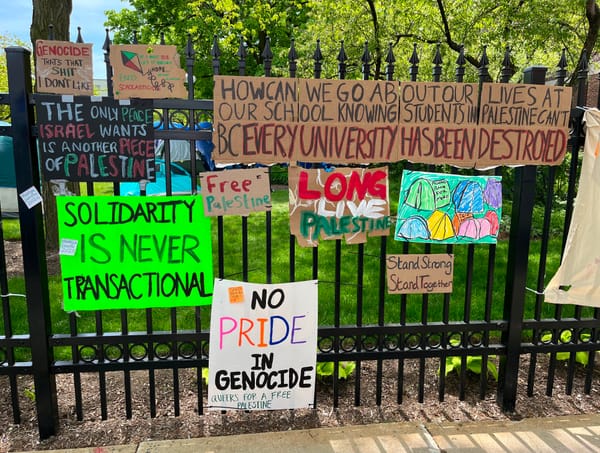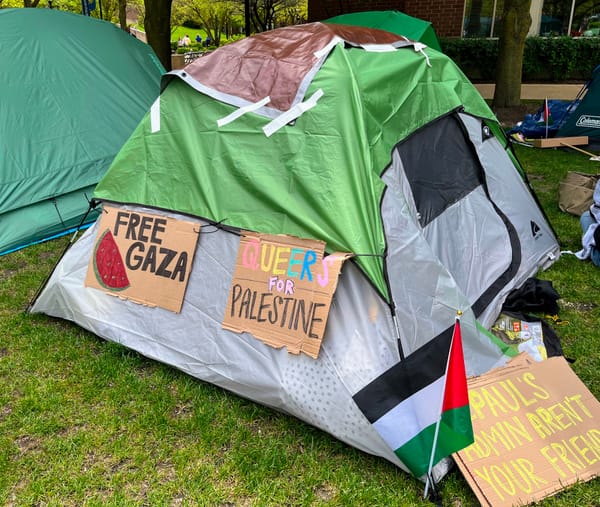Lessons in Self-Governance From the Zapatista Movement


The following is an excerpt from Constructing Worlds Otherwise by Raúl Zibechi (AK Press, 2024).
EZLN: Sowing Without Reaping
Zapatismo’s longevity, profound changes over the years, and impressive capacity to transform itself time and again for the last four decades make it the most important movement for social change in the world today. I quite well understand that this statement may come off a bit too strongly for some, therefore, I think it warrants an explanation.
Four decades since their founding and three decades since the armed uprising, the EZLN have shown exceptional ethical and political coherence. During all these years they have kept their distance from Mexican governments and the world, asserting their autonomy and building a different, noncapitalist world while resisting the prevailing extractivist model.
During this time, they were able to set up a new world in their established territories. They set up health posts, clinics, and hospitals with an emphasis on prevention; set up hundreds of primary and secondary schools, as well as other training spaces; created an autonomous justice system functioning under its own criteria and separate from that of the State to which even non-Zapatista families have turned to.
They have set up an extensive network of productive spaces that has permitted them to become self-sufficient in organic food production while diversifying crops. They have created autonomous banks that support collective projects, artisan cooperatives, and many other food making cooperatives. They have also become well known for the production, distribution, and exportation of coffee. The Zapatistas have also developed artistic initiatives in music, dance, theater, and communication, among others.
Much of their structure relies on what are known as good governance boards (juntas de buen gobierno) and autonomous municipalities. The good governance boards are collective authorities made up equally of both men and women, whose membership rotates so that people learn to govern themselves based on the principle of “commanding by obeying.”
All these initiatives were possible thanks to the collective work in their support bases and international and national solidarity, all the while never receiving any contributions from the State. The Zapatista world counts on almost no circulation of money while maintaining a strong anticapitalist structure.
For these reasons, Zapatismo has become an inescapable reference for the process of building autonomy in Latin America. Today, there are three autonomous governments in the northern Amazon of Peru, and several more in formation; there are twenty-six active autonomous protocols in place that demarcate land in the Brazilian Amazon across forty-eight territories where sixty-four Indigenous communities reside. In the southern Colombian region of Cauca, nine towns have formed their own authorities governing over their self-declared autonomous territories, grouped under the Regional Indigenous Council of Cauca (CRIC); there is also a broad process of recovering Mapuche lands where autonomous formations operate in southern Chile and Argentina.
Throughout the region, there are countless experiments of urban and rural autonomy, a few of them inspired by the uprising of January 1, 1994. However, referring to Zapatismo does not mean that everyone follows one of its postulates or its modes of construction. Autonomy has become a diverse and varied path, one replete with wide avenues through which different cultures and ways of doing things traverse. While they are still in the minority, they are no longer marginal.
• • •
Since October 22, 2023, the EZLN began issuing a series of communiqués in which it reported important changes to confront the new era of capitalist-modernity, what they refer to as the storm. From now on, the good governance boards and autonomous municipalities, created two decades ago and a symbol of Zapatista self-government, have ceased to function. In place of the roughly thirty autonomous municipalities that were in existence, there will now be thousands of grassroots structures, local autonomous governments (LGAL), and hundreds of Zapatista autonomous government collectives (CGAZ).
I would like to breakdown four key elements I have identified in the succession of communiqués that show the depth of the Zapatista vision and project as this storm rages on.
The first is related to “long time,” which looks ahead to seven generations, according to a passage in the communique titled “Dení,” the name of a Mayan girl to be born in 120 years’ time. The EZLN maintains that the “destruction comes faster. What we thought would happen in ten years is already here.” They state that they have spent ten years preparing “for these days of pain and sorrow” and “self-critically reviewing what we do and what we don’t do, what we say and don’t say, what we think and look at.”
The recent decisions they have made keep this long horizon in mind. As they state, “we have to fight for someone we are not going to know,” to make it possible for these new generations to be truly free and to take charge of the decisions they make, that is, the authors of their own freedom.
They bet on Dení to not only survive the ongoing storm but to go “through this and other storms that will come, it’s about surviving the night, and reaching that morning, 120 years from now, where a girl begins to learn that being free is also being responsible for that freedom.”
The EZLN observes that there will be wars, floods, droughts, and diseases ahead and therefore, “in the midst of collapse we have to look far ahead.” We can debate the exact years this will take but what I think is most important is the centrality of the long horizon, and above all, what must be done in order to reach this period under better conditions. The Zapatistas add a decisively ethical issue, that of fighting for people who will never get to know one another, while noting that there will not be a “final victory,” as we are accustomed to in revolutionary political cultures.
The second point is self-criticism, which is detailed in the communiqué entitled “Regarding Pyramids and Their uses and Customary Regimes.”
It should be noted that just as much as the left is obsessed with the time between elections, it also fails to critically review the decisions it makes.
In the “Regarding Pyramids and Their uses and Customary Regimes,” the positive aspects of the autonomous municipalities and the good government boards are addressed first. This structure allowed the municipalities to meet others, and helped them to organize autonomously, to deploy their own systems of health and education; they learned autonomy as a practice, not as a theory. In these spaces they were able to think of themselves as peoples, to learn, “to think, to give an opinion, to propose, to discuss, to study, to analyze, and to decide for ourselves.”
They also discuss the negative aspects of their formation. The EZLN points out that beyond the structure of the autonomous municipalities and the good governance boards, there were operational failures that led to “the pyramid separating the authorities from the towns.” The proposals from the authorities no longer came down to the people and the opinions of the people fail to reach the authorities.
The pyramid prevented or cut off the flow of information, government was not exercised collectively or “fully,” relays were not formed, and there was a tendency for the authorities to make decisions by themselves. “In other words, in summary, it was seen that the structure of how we were governed, as a pyramid, was not the way. It’s not from below, it’s from above.” The EZLN adds that the way of governing cannot be of a military nature, and that the people “have to find their way, their way and their time,” in reference to the fact that the military way of giving orders, vertical and from top to bottom, does not work.
Consequently, they decided to cut the pyramid and to turn it upside down as they realized the previous way of functioning would not allow them to properly confront the storm. This happened after multiple meetings and assemblies, where they came together and agreed on new ways of functioning that will allow them to travel on a journey of 120 years or more.
Two important issues emerge from this communiqué. The first is that structure is one thing and the way it functions is another. Structures can be used in various ways and are not as definitive as are the modes of doing things. I think this is a very important lesson for those who bet on structures without looking at how they work in practice.
Cutting off the top of the pyramid or turning it upside down is a profoundly transformative gesture. Especially when the now flattened tip was the same one they created themselves. I do not know of any other movement that has done anything similar anywhere else in the world.
The third issue is the disappearance of symmetries, which stems both from the decision to put an end to the autonomous municipalities and the good governance boards, as well as from the fact that the top of the pyramid was cut.
I am not saying that the EZLN has created symmetries as the axis of its policy. The point is that in a way, the autonomous municipalities that defined their territories were a counter to the municipalities of the State, just as the good governance boards were a kind of power against that of state authorities. With their disappearance and the creation of thousands of LGALs and hundreds of CGAZs, any possible symmetry/opposition with the nation-state and its structures and institutions disappears.
In this way, Zapatismo deepens its transformative character of the world, since it does not present itself as its counterpart or counterpower, but rather something completely different whose reference point is not found in the oppressor’s world. Co-opting or destroying a counterpower is a real and concrete possibility, as history has taught us. But at the same time, in that very same decision, Zapatismo sowed itself into thousands of new entities that cannot be destroyed by those from above without annihilating life on the planet.
So far, revolutions and vanguards have come to replicate the system they have opposed through symmetries: revolutionary violence against reactionary violence; people’s power versus bourgeois power; the workers’ or proletarian state as a response to the bourgeois state, and so on in every aspect, including in economic relations. Symmetries imply that those of us who want to change the system refer to the system, shortening our horizon and the imaginary of the changes that, by acting reactively to the ruling class, continues to be dominant within our ranks.
The final issue I would like to explore is the ethical depth of Zapatismo. The communique, titled “Fragments,” reads that they intend to “be a good seed”: “We want to be the seed of a future root which we will not see, which will then be, in turn, the grass which we will also not see.” They propose to “bequeath life,” not war or death, nor a new vision of the world for the next generation, not its miseries, its resentments, nor its pains.
This is a very strong statement made in the face of systemic political cultures. The left and the predominant world of critical thought have barely scratched the surface of something as profoundly different. Zapatismo turns systemic political cultures upside down. But neither is it the inversion of that culture, which would be a mode of symmetry, but rather they point to other modes anchored in difference.
To sow without reaping, without expecting to reap the fruits of what has been sown, is to hand over resistance and the construction of the new world to future generations without expecting anything in return, not even recognition. By renouncing the project to conquer the world to “do it again,” Zapatismo distances itself “definitively and irremediably, from the current and previous political conceptions.”
It is, in my view, the biggest known break with the old way of doing politics and changing the world. Sowing without expecting to reap themselves, supposes a profoundly antisystemic ethic that Zapatismo gives us as a gift to be valued in all its tremendous dimensions. My hope is that we will become open, receptive, and inspired by these practices to follow our own anticapitalist paths.
Raúl Zibechi,
December 2023
Constructing Worlds Otherwise is available for preorder from AK Press.
***
Reminder: I (Kelly) am away on medical leave. I hope you enjoy the book excerpts I will be posting during my absence. When I return, I will schedule a Zoom session for my paid subscribers to discuss the excerpts I've shared. Sending you all lots of love. Thanks for your patience and solidarity during this challenging time.




